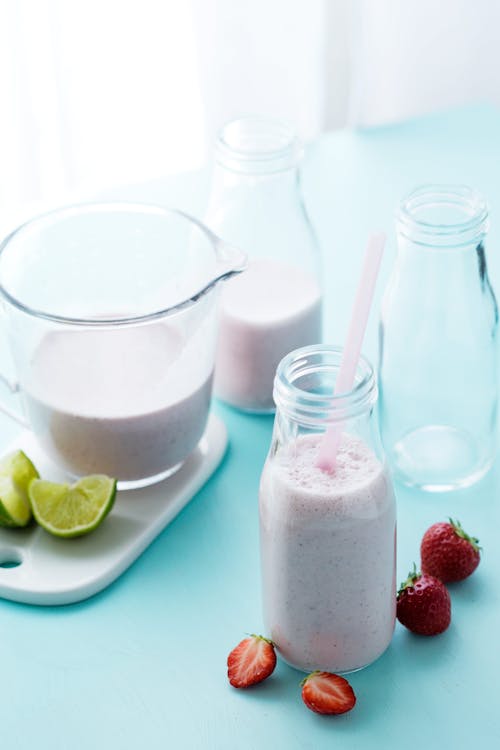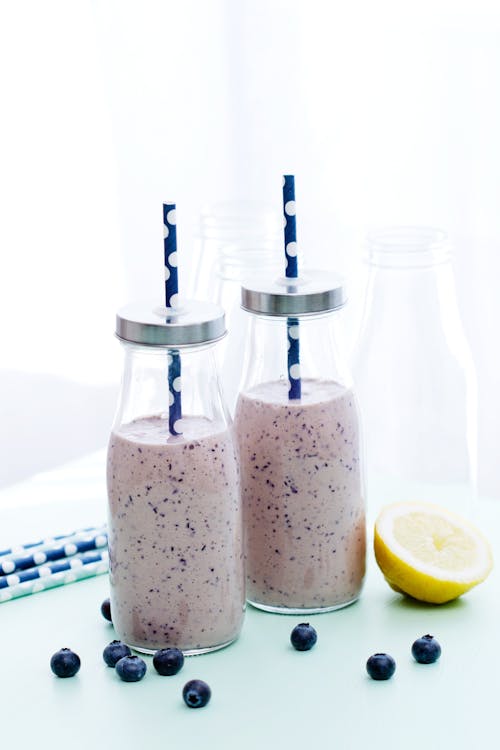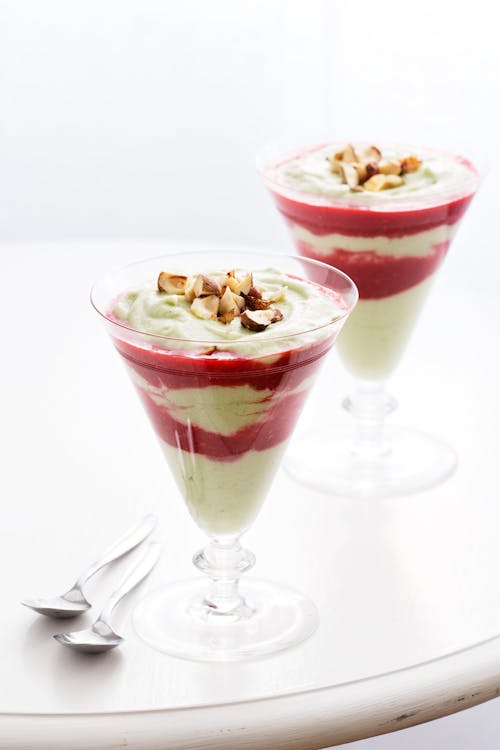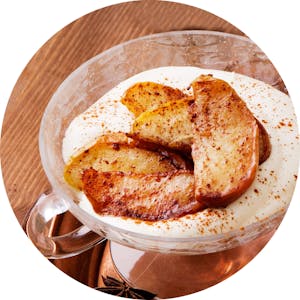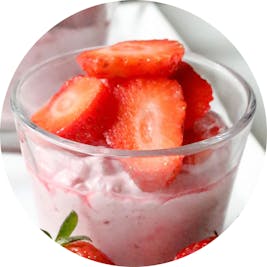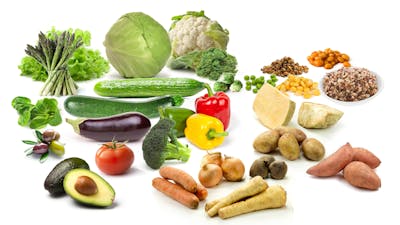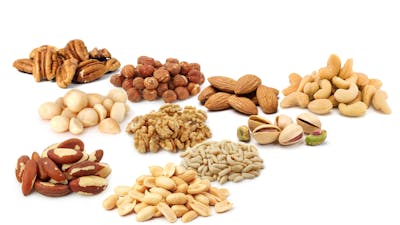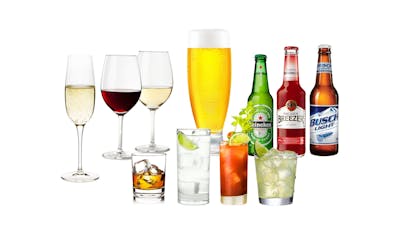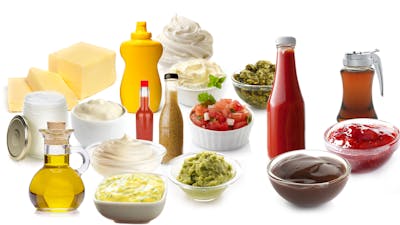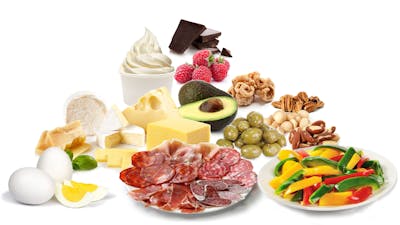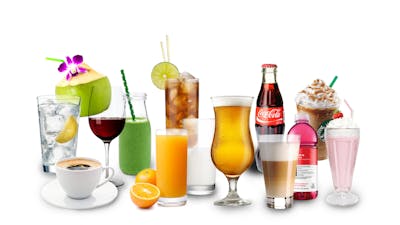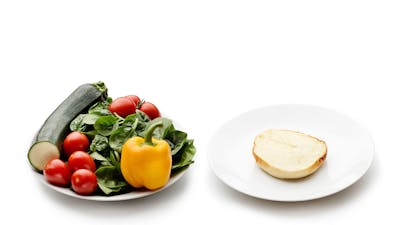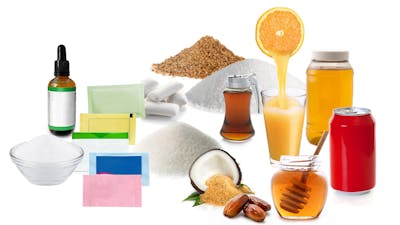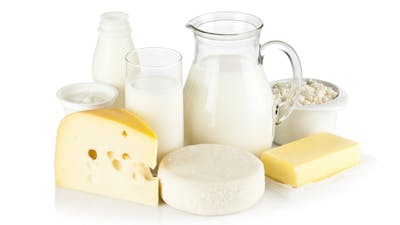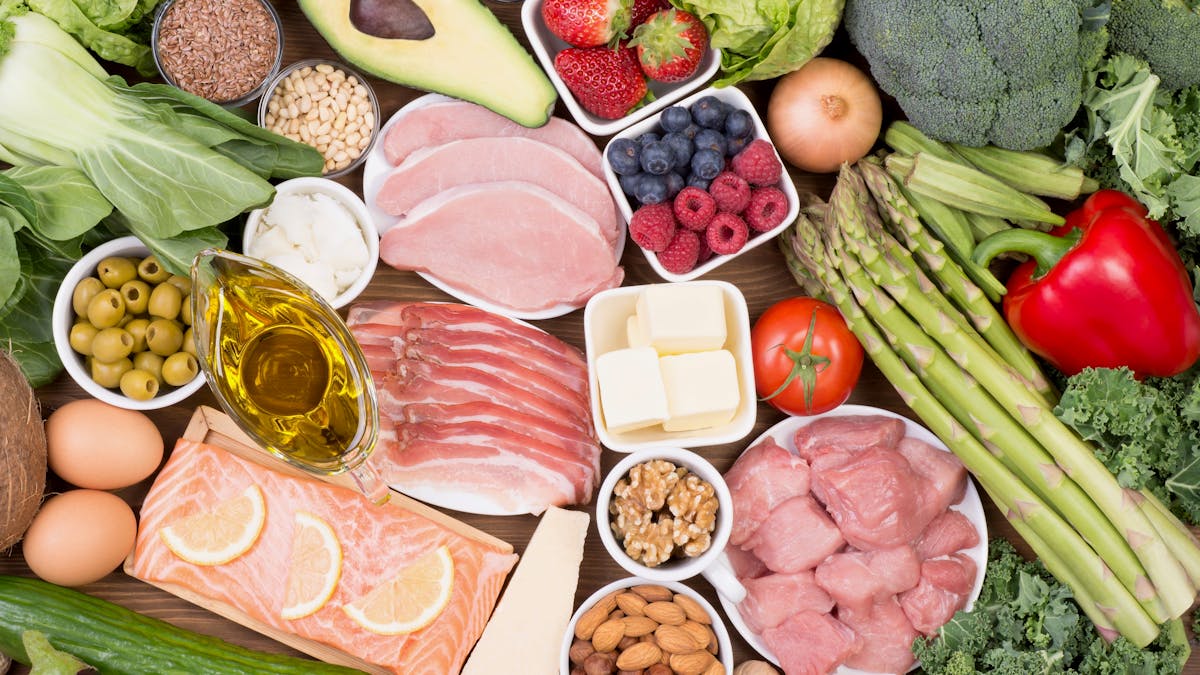Low-carb fruits and berries – the best and the worst
What are the best and worst fruits to eat on a low-carb diet?1 Here’s the short version: most berries are OK low-carb foods in moderate amounts, but other fruits can be thought of as nature’s candy, as they contain quite a lot of sugar.2
However, the sugar consumed by eating fresh fruit is not as bad as that found in actual candy. The soluble fiber in fruit can help with short-term satiety; it also reacts with water in your gut to form a thick gel that helps delay and reduce the amount of sugar absorbed from that fruit. In fact, up to 30% of the sugar from fruit may not be absorbed.3
Larger quantities of fruit, however, will deliver a significant sugar load to your intestines. Even if only 70% of that sugar is absorbed, 70% of a big number is still a big number.
Berries




Carbs list

Blueberries contain twice as many carbs as strawberries, so don’t overdo them – on a keto diet you should eat them only occasionally and in limited amounts.






For easy comparison all numbers are grams of digestible carbs per 100 grams (3½ ounces) of the fruits.6
See the complete carbs list for fruits:
Carbs list
How much fruit can you have?
On a keto low-carb diet (<20 grams of net carbs per day), you're probably better off choosing berries over other fruits. Also keep in mind that you don’t actually need to eat fruit. You can get any nutrient found in fruit from vegetables – without all the sugar. Therefore, perhaps you should try eating plenty of low-carb vegetables instead.7
Even on a more moderate low-carb diet (20-50 grams per day) you’ll have to be careful with fruit – probably no more than about one to two servings per day.
On a liberal low-carb diet (50-100 grams per day) you may be able to squeeze in two or three fruits a day, if that is your biggest source of carbs.
Isn’t fruit natural?
Fruit is usually considered a very natural food, something humans have always eaten. However, from an evolutionary perspective there are often massive differences between today’s fruits in the supermarket, and what fruit used to look like before, in nature.8
What fruits and vegetables looked like before
Furthermore, for most of human history, fruit was only available for limited time periods during the year, when they were ripe. Our ancestors, just like primates in natural habitats, were only able to eat plenty of fruit when it was available.9 If any excess sugar helped them gain weight, this could have been helpful to survive through lean times and protect them from starvation.10
Top 10 low-carb fruits




Let’s say you occasionally want to eat fruit while still staying relatively low carb. What fruit would be the best choice?
Below, you’ll find the best options, ranked by grams of net carbs.11 The lowest-carb options are at the top.
- Raspberries – Half a cup (60 grams) contains 3 grams of carbs.
- Blackberries – Half a cup (70 grams) contains 4 grams of carbs.
- Strawberries – Eight medium-sized (100 grams) contains 6 grams of carbs.
- Plum – One medium-sized (65 grams) contains 7 grams of carbs.
- Clementine – One medium-sized (75 grams) contains 8 grams of carbs.
- Kiwi – One medium-sized (70 grams) contains 8 grams of carbs.
- Cherries – Half a cup (75 grams or about 12 cherries) contains 8 grams of carbs.
- Blueberries – Half a cup (75 grams) contains 9 grams of carbs.
- Cantaloupe (melon) – One cup (160 grams) contains 11 grams of carbs.
- Peach – One medium-sized (150 grams) contains 13 grams of carbs.
As a comparison, a large orange contains about 17 grams of carbs, a medium-sized apple about 21 grams and a medium-sized banana about 24 grams of carbs.
Berry recipes
A moderate amount of low-sugar berries can be OK on a low-carb diet. Here are our top recipes:
Worse choices




Of course a fruit is still probably better than many other snack options – like a muffin or a handful of candy. All fruit (even bananas) are much lower in carbs than these.12
Q&A
Below you’ll find a few common questions about low-carb fruits, with answers. For more like this, check out our full low-carb FAQ.
What fruits are the lowest in carbs?
Remember: “Berries are best.” Raspberries, blackberries and strawberries are your best bet, with net carb counts of around 5 or 6 grams per 100 grams. Beyond that, perhaps a plum or a few cherries. Check out the visual guide above for exact carb counts for common fruits.
What fruits are high in carbs?
The worst offenders are bananas, at 20 net carbs per 100 grams, and grapes, with 16 net carbs per 100 grams. But most fruits, including oranges and apples, are fairly high in sugar and carbs.
What is the best fruit to eat to lose weight?
Because of their sugar content, it’s probably better to keep the fruit intake low if you want to lose weight on a low-carb diet.13 But a handful of berries is a fairly safe option if you want something fruit-like, without eating a lot of sugar. Beyond that, have a look at our top-10 list above.
Why isn’t avocado or tomato listed?
While technically they are fruits, most people probably think of an avocado or a tomato as a vegetable. Therefore, we’ve chosen to list them on our low-carb vegetables page.
Don’t I need the fiber and nutrients from fruit?
While it is true that fruit contains fiber and nutrients, it is far from the only source. Above ground vegetables are a much better choice with an equal or greater amount of fiber and nutrients but with only a fraction of the sugar.
Learn our best tricks & get inspired today!
Start your free trial and get instant access to our movies, documentaries, and video courses on weight loss, sugar addiction, keto for beginners, and much more.
Learn our best tricks & get inspired today!
Start your free trial and get instant access to our movies, documentaries, and video courses on weight loss, sugar addiction, keto for beginners, and much more.
Similar low-carb guides
Low-carb fruits and berries
– the evidence
It’s written by Dr. Andreas Eenfeldt, MD. The latest major update was on December 9, 2021. Further research and fact-checking by Paul Rutkovskis.
The guide was medically reviewed by Dr. David Cavan, MD, on February 22, 2019, by Dr. Bret Scher, MD, on February 10, 2020, by Professor Fredrik Nyström, on December 25, 2020, and by Dr. Michael Tamber, MD, on December 9, 2021.
The guide contains scientific references. You can find these in the notes throughout the text, and click the links to read the peer-reviewed scientific papers. When appropriate we include a grading of the strength of the evidence, with a link to our policy on this. Our evidence-based guides are updated at least once per year to reflect and reference the latest science on the topic.
All our evidence-based health guides are written or reviewed by medical doctors who are experts on the topic. To stay unbiased we show no ads, sell no products and take no money from the industry.14 We’re fully funded by the people, via an optional membership.15
Read more about our policies and work with evidence-based guides, nutritional controversies, our writers team and our medical review board.
Our low-carb advice and recipes are meant for adults with health issues, including obesity, that could benefit from a low-carb diet.
Controversial topics related to a low-carb diet, and our take on them, include saturated fats, cholesterol, whole grains, red meat, whether the brain needs carbohydrates and restricting calories for weight loss.
Should you find any inaccuracy in this food policy, please email andreas@dietdoctor.com.
Low-carb fruits and berries – the best and the worst - the evidence
This guide is written by Dr. Andreas Eenfeldt, MD and was last updated on December 8, 2022. It was medically reviewed by Dr. Michael Tamber, MD on December 9, 2021.
The guide contains scientific references. You can find these in the notes throughout the text, and click the links to read the peer-reviewed scientific papers. When appropriate we include a grading of the strength of the evidence, with a link to our policy on this. Our evidence-based guides are updated at least once per year to reflect and reference the latest science on the topic.
All our evidence-based health guides are written or reviewed by medical doctors who are experts on the topic. To stay unbiased we show no ads, sell no physical products, and take no money from the industry. We're fully funded by the people, via an optional membership. Most information at Diet Doctor is free forever.
Read more about our policies and work with evidence-based guides, nutritional controversies, our editorial team, and our medical review board.
Should you find any inaccuracy in this guide, please email andreas@dietdoctor.com.
Ketogenic diets generally contain fewer than 20 grams of net carbs per day, while moderate low-carb diets have less than 50 grams. This means that fruits cannot be consumed in unlimited quantities while eating low carb. Learn more on our low-carb science page. ↩
While fruits were eaten by our ancestors and contain a combination of carbs, sugar, and fiber, the fruits of today look nothing like the fruits that were naturally available to our ancestors. The fiber to sugar ratio has undoubtedly tipped towards higher sugar.
Nutrients 2016: Paradoxical Effects of Fruit on Obesity[overview article; ungraded] ↩
Soluble fiber is mostly non-absorbed by the intestine, but may contribute slightly to calorie absorption. However, it’s generally accepted that the human body doesn’t produce the enzymes needed to break down insoluble fiber:
Gut Microbes 2017: Dietary fiber and prebiotics and the gastrointestinal microbiota [overview article; ungraded]
Your gastrointestinal tract can’t digest naturally-occurring insoluble fiber, so it passes through without being absorbed. Therefore, insoluble fiber won’t adversely affect your blood sugar or insulin levels.
International Journal of Molecular Sciences 2017: Gut fermentation of dietary fibres: physico-chemistry of plant cell walls and implications for health [overview article; ungraded]
↩We define a ketogenic diet as having less than 20 grams of net carbs per day:
Keep in mind that a typical medium-sized apple (180 grams), for example, may contain about 21 grams of carbs. ↩
Regarding nutrients in vegetables, you can check for yourself in the USDA Food Composition Databases that vegetables generally are as rich as fruits in fiber and nutrients like vitamins, minerals and other beneficial plant compounds, if not more. ↩
The picture above shows what a banana used to look like compared to what it looks like now. In general, fruit now is larger, sweeter, and has a thinner skin. ↩
International Journal of Primatology 1998: Changes in orangutan caloric intake, energy balance, and ketones in response to fluctuating fruit availability [very weak evidence]
Dr. Christopher S. Bard: Why do humans crave sugary foods? Shouldn’t evolution lead us to crave healthy foods? [overview article] ↩
Obesity (Silver Spring) 2013: Redefining metabolic syndrome as a fat storage condition based on studies of comparative physiology [overview article]. ↩
Net carbs = digestible carbs, i.e. total carbs minus fiber. ↩
There is one exception: dried fruits like raisins, dates, apricots, figs and prunes can contain 40-65 grams of sugar per 100 grams.
Be extra careful with dried fruit as they are a concentrated source of sugar, and it is quite easy to eat large quantities of them. ↩
Studies have consistently shown that low-carb diets either outperform or are equivalent to other diets with respect to weight loss. There is copious evidence that low-carb diets are effective for treating type 2 diabetes and improving metabolic health.
A full declaration of potential conflicts of interests of individual authors or reviewers can be found on their personal pages, linked from their names. ↩
Most information at Diet Doctor is free forever.
For our premium member features we offer a free one month trial. After that, should you choose to stay a member, the cost is $9 per month. No commitment, cancel online anytime.
We currently have more than 80,000 active members. They support our mission – empowering people everywhere – and help us grow our team to achieve this goal.
